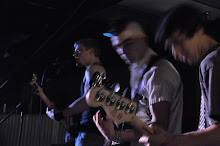The Diving Bell and the Butterfly is a film that is shot unlike any other movie that I have watched. The first half an hour or so of the movie made me feel trapped and confined in Jean-Do's body unable to get a good grasp of the surroundings. The camera going in and out of focus and the shots cutting quickly from one to another as if a long blink had happened also made it difficult to concentrate on one specific area. The depth of field was constantly shifting which actually made my eyes strain. This point of view really pulled me into the movie and helped me understand what the main character was going through. In this movie there was also a lot of offscreen space, meaning space that could not be scene by the main character from his point of view but still existed or was implied outside the film frame. This too made me want to move my head and shift my position in my seat so that I might see the world around the character.
There were also several representations scenes in this movie. The most prominent ones were the diving suit, the butterfly, and the iceburgs. To me, the diving suit represented the feeling of being trapped. Jean-Do was trapped in his now paralyzed body as he was trapped underwater in the diving suit without a diving bell for him to ring which would singnal someone to pull him out. Just as he had no diving bell in the vision, he had no diving bell in real life for someone to pull out of his paralysis. This leads to the scene of the butterfly. I believe that the butterfly represented the nurse who helped Jean-Do to communicate. She gave Jean-Do the wings he needed to escape his trapped world through his imagination and through communicating through his one good eye. The final representative scene of the icebergs falling into the ocean represented Jean-Do's world crashing down around him. He had lost the will to live and felt as if he had nothing. By the end of the movie, however, he sees life differently and learns to appreciate what he has. He comes to terms with his condition and makes the best of it by writing a book about his life and experiences. The closing scene with the icebergs in reverse motion showed how at the end of his life he had put everything that he could back together in his mind and felt accomplished.
There were several other scenes that that I especially liked. The first was where Jean-Do is alone on a dock surrounded by the high tide. This represented how lonely he was and how he was isolated from everyone else. Another scene is when someone is talking, such as the nurse, Jean-Do's mind wanders and he explains how he is really feeling while you can still hear the person in reality talking in the background. This monalogue shows how frustrating and time consuming it is for him to communicate and how his thoughts have shifted from before the stroke. The last scene that stuck out to me was the shots of Jean-Do driving through Paris. These shot immediatly follow a scene from Jean-Do's post stroke, confined point of view. They completely contrast the previous shot by being extremely angled, panning left to right, and sometimes even upside-down. This shows how differently he used to observe life and how we can sometimes can take the gift of mobility for granted. Overall, this movie was creatively shot and filmed and gave me a unique viewing experience.
Friday, September 18, 2009
Subscribe to:
Post Comments (Atom)

No comments:
Post a Comment